Despite the title, the actual budget doesn’t get presented. Normally, the “presentation” or outline comes out in late May as part of a regular meeting. The full budget is debated a few weeks later. This year, the schedule got disrupted by the “cyber incident,” so the council called a brief “special meeting” to receive the presentation. Of note, the City could have passed a 1/12th budget to buy some time, but were able to squeeze in a complete budget under the deadline.
The full budget should drop today and will be taken up at an absolute marathon of a meeting on June 20. Nevertheless, the outline of the budget provides some decent fodder. Before we get to it, let’s check the mailbag:
Hi Ryan,
Your blog is my favorite thing ever. It saved my marriage. One request: can you please add more highbrow cultural references? Art is the handmaiden of human good, whatever that means.
-Jim Bowen
Dear Mr. Citizen, Sir –
The blog is a work of staggering genius, and I’m looking forward to your FY 24 Budget content – but don’t you think it would be EVEN BETTER if you used more GIFs as a crutch?
– Ed Howe
Wow, what convenient writing prompts. Thanks, real people.
This looks like one of those “2 birds / 1 stone” opportunities. The only true American art forms are jazz and pro wrestling. Sadly, quality jazz GIFs are hard to come by. Therefore, I am pleased to present the the FY 2024 Fiscal Budget Summary featuring GIFs of your favorite WWE superstars.

1. A Boost in Capital Project Spending
The first item that caught my eye (after skipping to the tax increase) is the FY2024 investment of $31 million in capital projects. As per the City Manager’s letter attached to the loan order:
The City of Lowell continues to maximize tax payer’s dollars by pursuing state, federal, and private grant sources to fund capital investments, where tax dollars are only required to match a fraction of the overall project costs. The FY2024 capital budget makes a historic investment in roadways and bridges, increases the commitment to accessibility from 5% to 7% for compliance with the Americans with Disabilities Act (“ADA”) requirements, and continues the city’s momentum on investments into city and school facilities.

For context the past few loan orders for capital projects are as follows:
FY 2024 = $31,000,000
FY 2023 = $12,913,500
FY 2022 = $13,745,294
FY 2021 = $6,771,100
FY 2020 = $25,243,294
FY 2019 = $9,903,391
FY 2018 = $11,077,544
FY 2017 = $7,360,320
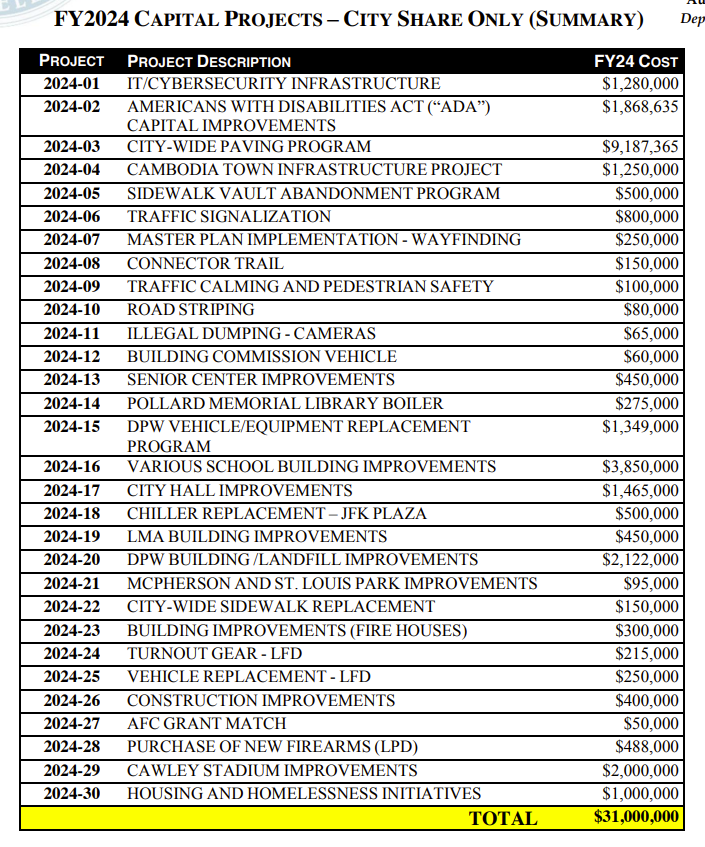
Want to make the city noticeably better? Start throwing money at problems. As I see it, we’re going to pay one way or another. Pay for proactive maintenance and improvement – or absorb the massive costs of neglect. $31 Million is a hefty price tag, but if we can start to get out in front of some of these things, we’ll save (or perhaps even generate) money in the long run.
Councilor Gitschier (echoed by Councilors Robinson and Scott) took exception to the $300K allocated to Fire House improvements (an explicit council priority), while $2M is allocated for repairs at Cawley Stadium. Councilor Drinkwater cautioned against pitting one line item against another.
Let’s listen to Councilor Drinkwater – this type of sniping is unhelpful and the Cawley money is part of the five-year plan approved by this same council last year.
Now, let’s ignore Councilor Drinkwater – Do I see a half million for guns? What the hell?

Don’t confuse me for a “defund the police” advocate, but when the “new firearms” line item is 48.8% of the “housing & homeless initiatives” item and almost 5x the item for “traffic calming and pedestrian safety,” I have questions. Did all the current firearms suddenly go bad? Will every officer get a new gun? Will they get 3? Is it just one giant tactical warhead?
2. Hol Up, We Have to Pay for This Stuff?!


5.5% last year, 3.5% this year.
3. Dynamic Pricing For Metered Parking

Bring it on. The City’s parking system has been a shambles lately, but things are looking up. New equipment is coming online allowing us to move to a new dynamic parking fee structure for metered spots:
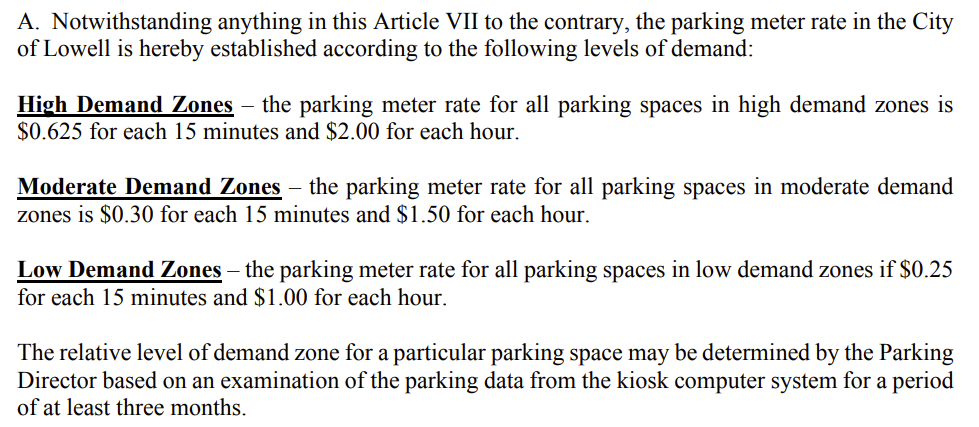
The new parking fee structure has the potential to reflect the goals and changes recommend in the 2021 parking study:
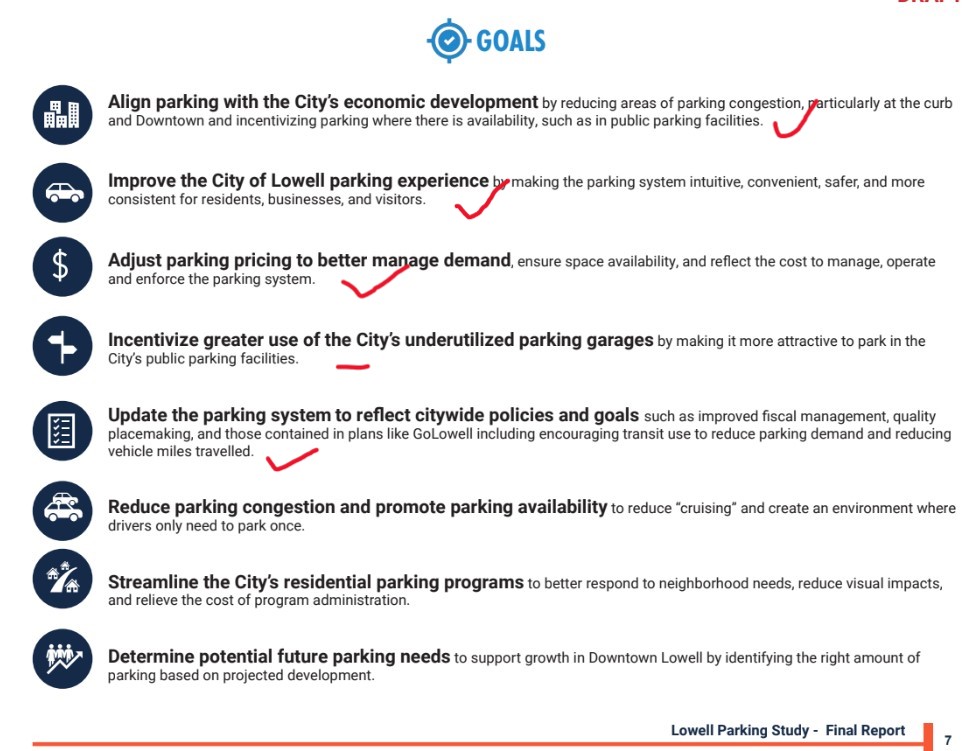
But – does this proposal nail it…
3A. Transient Garage Rates vs. Meter Rates? Jury Still Out
Do these rates, coupled with the modest on-street rates “incentivize greater use of the City’s underutilized parking garages?”
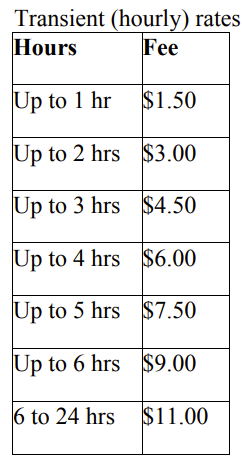
This fee schedule looks too close to the on-street rate. Parking garages are pits of despair. So why are we pricing them so close to the on-street rate? Perhaps we should lower the garage rates or increase the on-street rate?
3B. Passholder Garage Rates vs. What’s Fair? Also Not Sure
There are too many garages and passholder agreements to list here, but generally, the new proposed rate structure is as follows:

Councilor Jenness, who represents the Downton electoral district, noted that the new “very large increase” in fee structure results in the following bump:
Residents = 28%
Group Rate = 34%
Market Rate = 25%
DT Residents 62-64 y/o = $130%
Our parking fund is an enterprise fund. An enterprise fund is a self-supporting government fund that sells goods and services to the public for a fee. These fees should, in theory, cover all of the expenses of the enterprise. However, our parking enterprise fund is broken in that we are losing money – specifically with our garages, and are projected to keep losing money in years to come.
When the fund runs short, taxpayers have to subsidize someone else’s car storage. I don’t think I should have to worry about what it costs someone else to store their car any more than I worry about what it takes to store their dishwasher. BUT – what if people leave downtown because the rates went up? Wouldn’t that hurt the city? Should we be trying to balance the books of our enterprise fund on the backs of our loyal monthly pass holders?

Meh. The garage deficit suggests that some groups have been paying too little for too long. Further, if the few bucks in extra garage fees is your deal breaker, I’m not sold on the argument that you’re propping up the downtown economy.
If we continue down this path, we’ll be forced to sell some garages. If you don’t like the city rates, you’re in for a rough ride.
4. Stunner from Out of Nowhere – $13M for a Legal Settlement

[Sidenote: ^ this is precisely why people hate garages]
Not exactly out of nowhere – the settlement was reported weeks ago.
No discussion last night. Likely because it falls into the “is what it is” category. But, oof. Seriously. Oof.


5. Our Yearly Choke-Slam Through the Top of a Cage Onto a Steel Chair
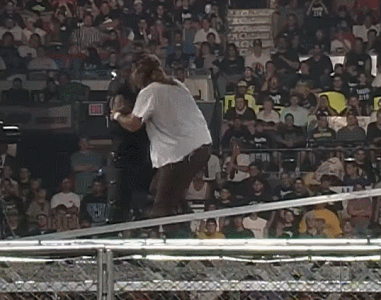
GOOD GOD ALMIGHTY! THAT’S THE CHARTER SCHOOLS’ MUSIC!
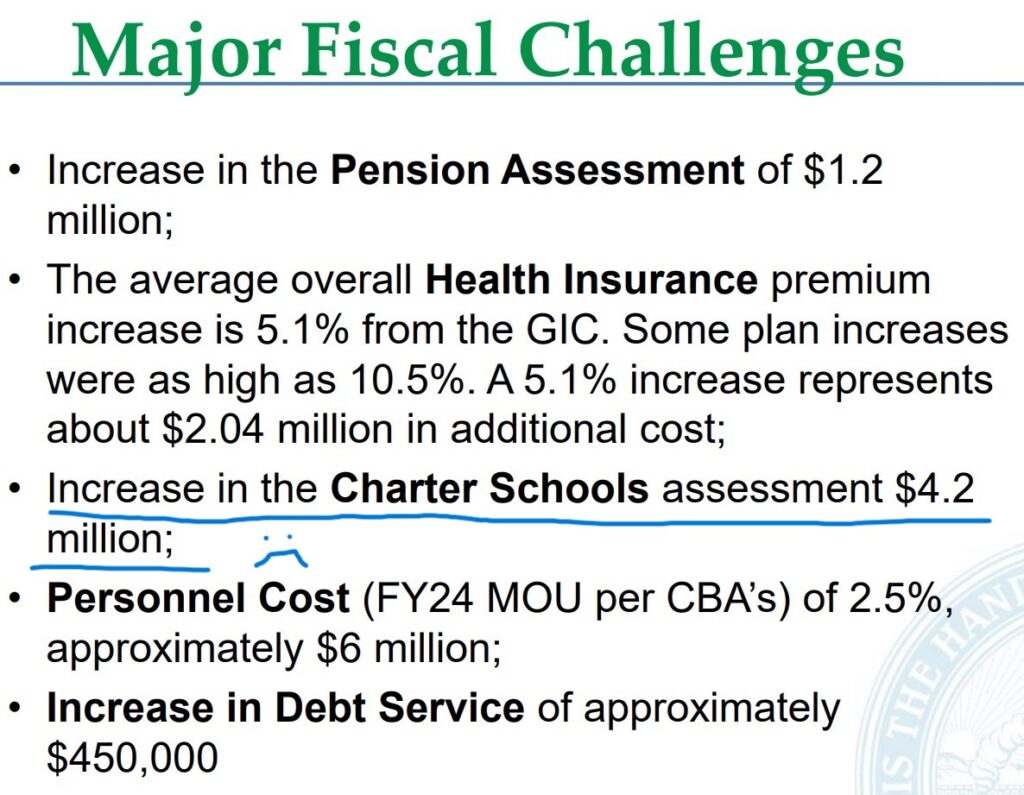
It didn’t come up last night, but in recent budget presentations, the city has done a good job at trying to highlight the charter schools’ impact on the budget:
FY 24 Presentation:
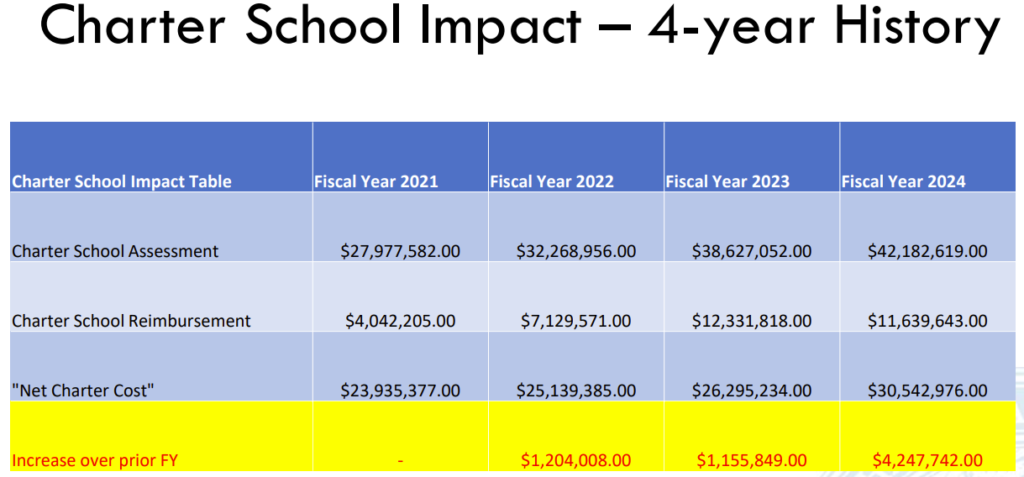
FY 23 Presentation:
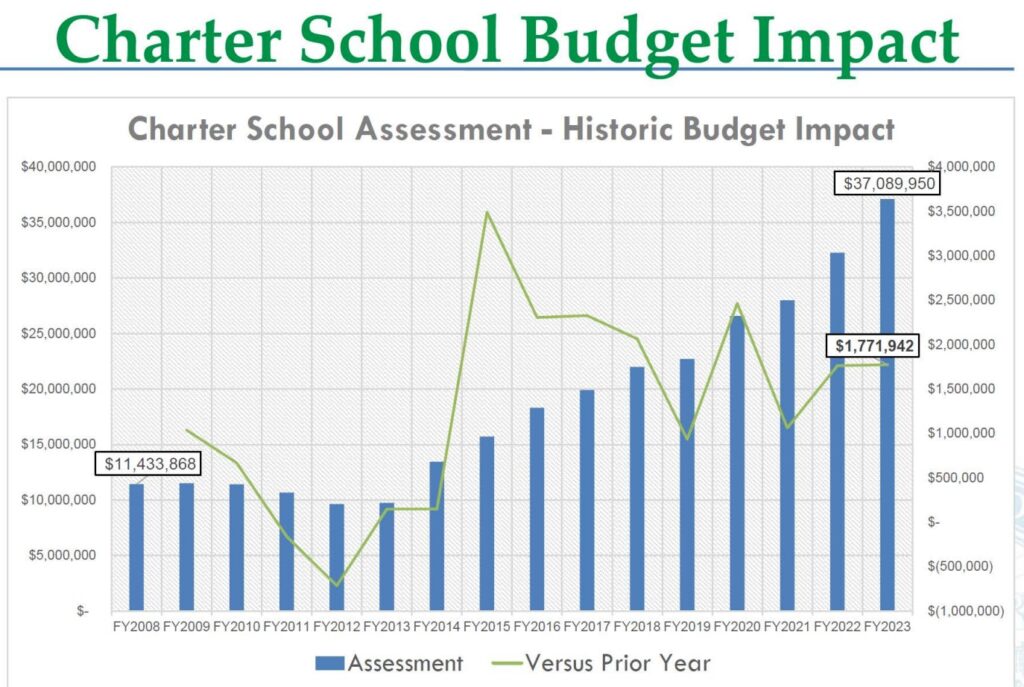
FY 22 Presentation:
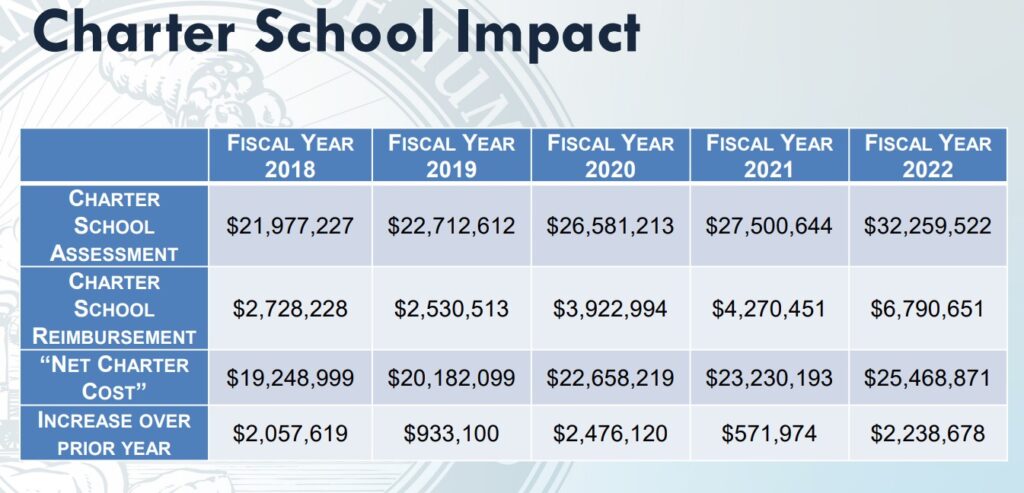
As long as they get to pretend they get better results, I guess we’ll just keep doing this? (Save your e-mail – I don’t care about how your kid flourished)
6. New Position of Sustainability Director & New DPW Division

Maybe these items are not that exciting, but I had no Stone Cold, and I panicked.
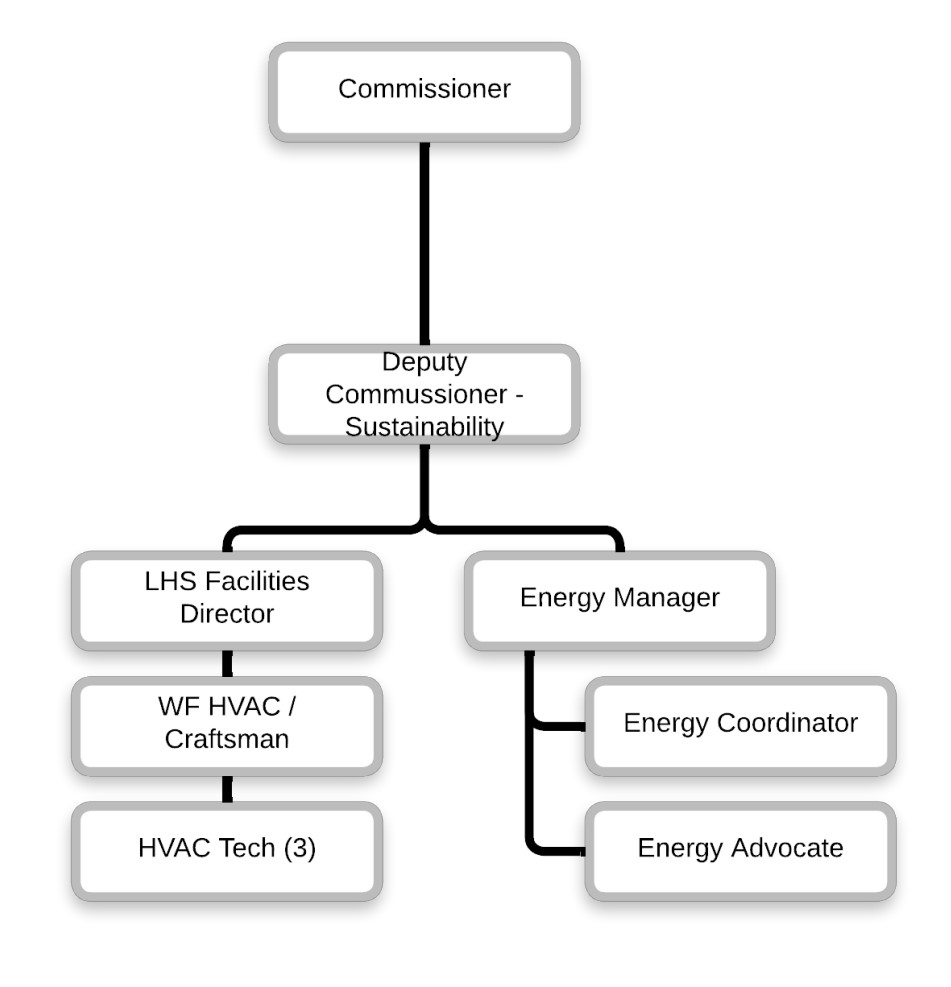
7. Time for the Measured Public Response

“Everything needs to be better, but it also needs to be free!”
“…and fix the damn potholes!”
Seriously though – In the past 2 years, we’ve seen an increase of 9% in taxes, plus increases in water and sewer rates. This is, of course, ON TOP OF the increase in basically every other aspect of spending necessary to keep living. I love to see investment in the city. I’m happy to pay more to make Lowell better. But it’s hard not to feel the pain tax increases can cause. I can understand why people would be pissed/concerned/alarmed about another increase.
It’s an impossible task of balancing the need for services with the desire to avoid squeezing people who are already struggling to get by. It’s a real pickle. I guess you try to find new sources of revenue or something? I don’t know. I’m over here curating wresting memes. Does it look like I would have answers?
8. The Rest
A. The full Proposed FY 24 Budget should be out today. I’ll try to throw a link up on my Twitter feed or this website when it drops.
B. Tune in for the full budget meeting on June 20th. It’s your money they’re spending.
C. I had more fun than usual this week and it was mostly cut and paste. Win/win for everyone.

^ never forget.















8 responses to “FY24 Budget Presentation Special Mtg Recap.”
Respectfully, on the parking issue, the parking enterprise fund contains more than garages – it’s all parking. The city hasn’t had real parking revenue from street parking or transient garage parking for three years due to the pandemic. The only group consistently contributing is the garage pass holders.
To keep street rates mostly the same and only raise the pass holders’ costs by a substantial amount is unfair and ignores the fact that the garages are a public good enabling housing and commerce downtown, and that’s something the whole city should pay for…like, for example, how downtown people pay taxes that go to trash collection services around the city that downtown residents do not receive. Look at the last time the yearly trash fee paid by city residents was raised – I think it was about 15-20 years ago. Downtown is interconnected with the rest of the city and we all pay for things we don’t directly benefit from – that’s part of living in a community and paying taxes.
PS – Love the gifs! More gifs is always the right answer.
The on-street program does a better job of paying for itself – even during the pandemic, and even with half-functioning equipment. Nevertheless, I too think the on-street rates are too low.
I reject the premise that it’s a “fact” that parking garages are a “public good” – but that’s an entirely different can of worms.
The trash/parking argument is compelling, but I haven’t done the math on garage fee discounts vs. trash fees. I believe it was Councilor Scott who asked for the costs of a trash enterprise fund and it worked out to $268/household in trash fees. Do the fee discounts for parking amount to more or less than $268/year?
Take a look at the sweet deals UML, MCC, etc get at the garages and you’ll see why they fail to turn a profit
The GIFS’s are brilliant. Couple thoughts on another excellent article:
1. Right on about the parking garages and the thought that if it breaks someone’s back and they leave DTL, the impact is marginal. People love talking about parking and garages it seems.
2. The Firehouses are really in need of some work. I’m glad to see these capital projects are being budgeted. (no joke on this one. I really am happy)
3. Charter Schools are kinda like the British Tea Tax: Taxation without Representation. No local elected oversight of their operation or budget. Imagine how many administrators would be hired if there was no local oversight of LPS?
4. Dumping Camera’s sound good. I just don’t want to see the footage. Especially from the Lee and John Street area.
Oh! The gun thing too. 500K for guns seems like a lot. Can’t they just camp out on 495, pull over some drivers and arm themselves through confiscations? Or just raid a parking lot full of cars in DTL on a Friday Night? I mean they must have an arsenal from all the guns they must seize during the year? I know they are supposed to probably have a standard issue fire arm, but how much fun would it be for the Police to have an annul gun draft? I supposed then you’d have to get all different kinds of bullets.
Living in Pawtuketville, I was told DT residents’ pass cards could be discounted because they would leave the garage in the morning, and those newly vacated spaces would be filled by day parkers [pass card holders or transient parkers]. They were not parking there during prime parking time. Based upon the number of cars that never moved, I think there was a flaw in their plan. Maybe with more DT residents teleworking this has changed, but the last I knew DT businesses were not self-sufficient and dependent upon those who lived elsewhere for them meeting their expenses. If parking prices make it too expensive in comparison to places with copious free parking, for people coming DT, those patrons/clients will exercise their option to go elsewhere, and DT Businesses will lose businesses. You can decide if that not happening is for public good or not. During a public hearing before a previous rate increase one young man mentioned it was becoming cheaper for him to Uber to the ‘burbs than for his friends to park DT and go to eat out DT, and that the CC should keep that in mind when setting rates. A couple of small former DT business owners stated that they paid for their employees’ parking and that the proposed rate increases would mean that they would leave DT when their leases were up. I am very curious how the bookkeeping for city employee and city vehicle parking is managed. Does the school dept. pay the parking dept. the group rate? Supposedly as you indicate the HCID garage was built to encourage additional development for the betterment of the city. The loan payments for the practically empty HCID is one of the reason the enterprise fund is underwater.
Downtown resident here. Of course I don’t want to pay more for monthly parking – but that’s the cost of maintaining a vehicle in a densely populated area. If these changes are implemented, our family will simply have to adjust. It won’t be enough to send us packing for another neighborhood; the benefits of living downtown clearly outweigh the cost of a parking pass.
When it comes to tax revenue, the city is better off having dense, productive commercial zones rather than shopping centers like Meadow Brook Center. My assumption is that the downtown isn’t the robust revenue generator it *could* be but in order for us to get it there, we’ll need people to accept that ample free parking is at odds with what cities are designed to be: compact communities that meet a diverse set of needs.
P.S. Ten bells for the Iron Shiek.